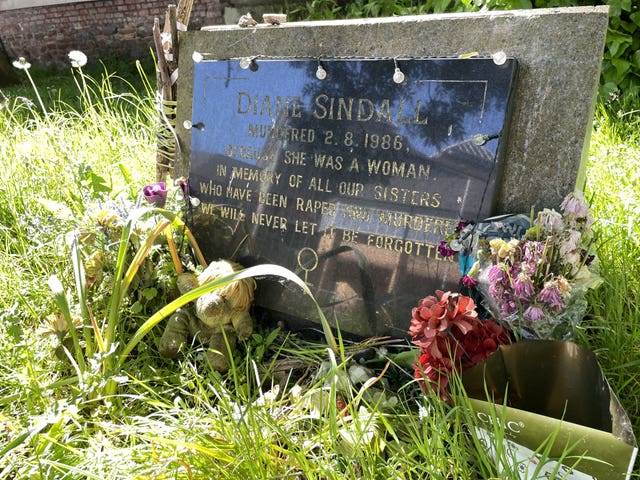New DNA evidence casts ‘sufficient’ doubt on 1987 murder conviction, court told
Peter Sullivan was jailed in 1987 for the murder of 21-year-old Diane Sindall in Bebington, Merseyside, in 1986.

New DNA evidence is “sufficient fundamentally to cast doubt on the safety of the conviction” of a man who has spent 38 years in prison for murder, the Crown Prosecution Service (CPS) has told the Court of Appeal.
Peter Sullivan was found guilty of the 1986 murder of 21-year-old Diane Sindall in Bebington, Merseyside, in 1987, but has remained in prison despite being sentenced to life with a minimum term of 16 years.
Ms Sindall had been returning home from work when she was beaten to death and sexually assaulted, with her body left partially clothed and mutilated.
Sullivan, who is now 68, is appealing against his conviction for a third time – 17 years after his first attempt to overturn it – after the Criminal Cases Review Commission (CCRC) referred his case to the Court of Appeal.
The CCRC said in November last year that samples of DNA from the killing did not match Sullivan.
In written submissions for the hearing on Tuesday, the CPS said the new DNA evidence is “reliable” and that it “does not seek to argue that this evidence is not capable of undermining the safety of Mr Sullivan’s conviction”.
Duncan Atkinson KC, for the CPS, said: “The respondent considers that there is no credible basis on which the appeal can be opposed, solely by reference to the DNA evidence.
“On the contrary, the DNA evidence provides a clear and uncontroverted basis to suggest that another person was responsible for both the sexual assault and the murder.
“As such, it positively undermines the circumstantial case against Mr Sullivan as identified at the time both of his trial and his 2021 appeal.”
He continued: “The respondent does not seek to dissuade the court from the conclusion contended for by the appellant, namely that the DNA evidence is sufficient fundamentally to cast doubt on the safety of the conviction.
“The DNA evidence is reliable evidence not available through no one’s fault at the time of the trial, which supports the contention that Mr Sullivan was not the individual who sexually assaulted Ms Sindall
“In light of the absence of evidence indicating that the attack was committed by two persons, or any other realistic hypothesis, it follows that the remainder of the circumstantial case cannot withstand the obvious implications of the DNA evidence, so that the conviction could be upheld.”
Sullivan watched the hearing in London via videolink from HMP Wakefield, with members of his family in court.
His lawyers have said that if his conviction is quashed, he would be the longest-serving victim of a miscarriage of justice in the UK.

He was alleged to have spent the day of Ms Sindall’s murder drinking heavily after losing a darts match, and went out armed with a crowbar before a chance encounter with her.
Her florist van had broken down on her way home from a pub shift, and she was walking to a petrol station when she was attacked.
Mr Atkinson said that following Sullivan’s arrest in September 1986, he was interviewed 22 times over four weeks.
He was denied access to legal advice in the first seven interviews despite requesting it, but later “confessed to the murder” in an unrecorded interview a day after his arrest.
He later repeated the confession in a recorded interview, but Mr Atkinson said that this “was inconsistent with the facts established by the investigation” and inconsistent with Sullivan’s earlier interviews.
Sullivan then retracted his confession later that day.
Mr Sullivan first applied to the CCRC in 2008 over concerns related to DNA evidence, but it did not refer the sentence to the Court of Appeal at that time.
The CCRC said in November last year that experts at the time had advised that “any further testing would be very unlikely to produce a DNA profile”.
Mr Sullivan then had an appeal bid, which did not involve the CCRC, dismissed by the Court of Appeal in 2019, after judges ruled that bite mark evidence used in the challenge was not central to the prosecution at trial.
He then applied to the CCRC again in 2021 to refer his case, raising concerns over police interviews, bite mark evidence used during his trial, and the murder weapon.
The CCRC said that, as well as new DNA evidence, there was “also evidence to suggest there were possible breaches of the Police and Criminal Evidence Act 1984” concerning the interviews, with Mr Sullivan not provided with an appropriate adult and initially denied legal representation.
At the Court of Appeal, barrister Jason Pitter KC, for Sullivan, said that Ms Sindall’s murder was “a grotesque offence”, but that the evidence could not now pass “the threshold with which a prosecution could take place”.
While he accepted that improvements in science and the “passage of time” had “significantly assisted” Sullivan’s position, the new DNA evidence showed that Ms Sindall’s killer “was not the defendant”.
Mr Pitter continued that bite mark evidence used in the original trial, which the prosecution claimed at the time matched Sullivan and were found on Ms Sindall’s body, were no longer viewed as reliable evidence of identification in criminal cases.
He also said that “significant admissions” and “incriminating statements” made by Sullivan at the time of the killing were “inherently unreliable” due to his “vulnerability”.
He said: “The appellant was extremely vulnerable in an interrogative situation, because of his limited intellectual functioning, combined with his problems with self-expression, his disposition to acquiesce, to yield, to be influenced, manipulated and controlled and his internal pressure to speak without reflection and his tendency to engage in make-believe to an extreme extent.”
He continued: “What he was saying was nonsense, in plain terms.”
The hearing before Lord Justice Holroyde, Mr Justice Goss and Mr Justice Bryan is due to conclude later on Tuesday.





